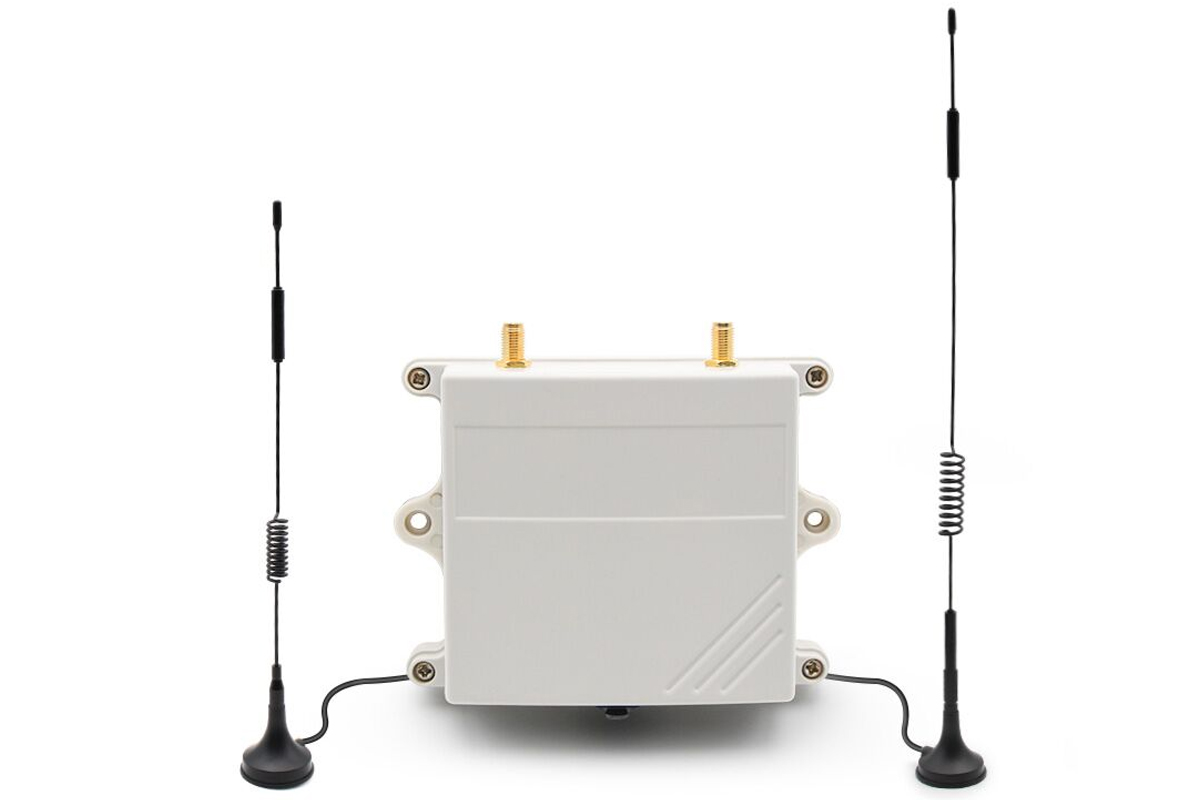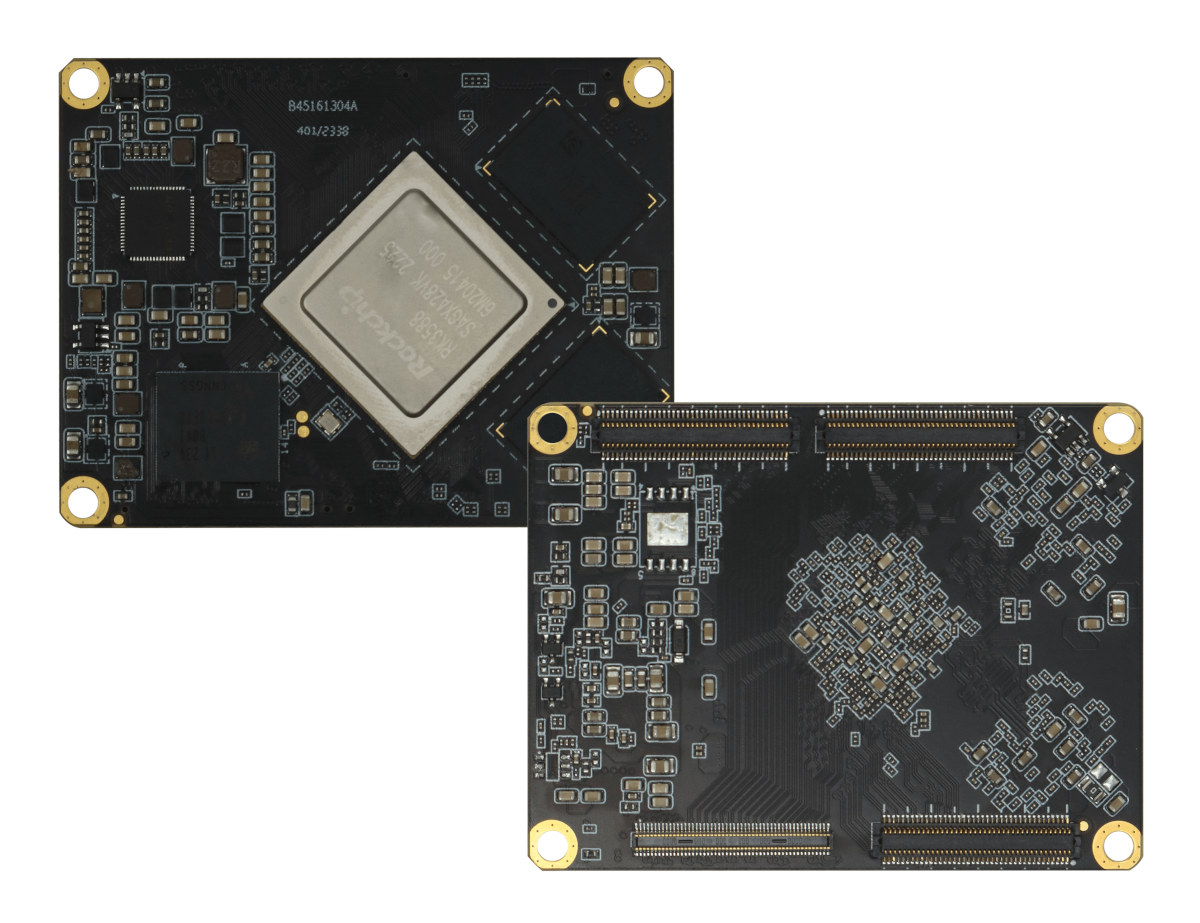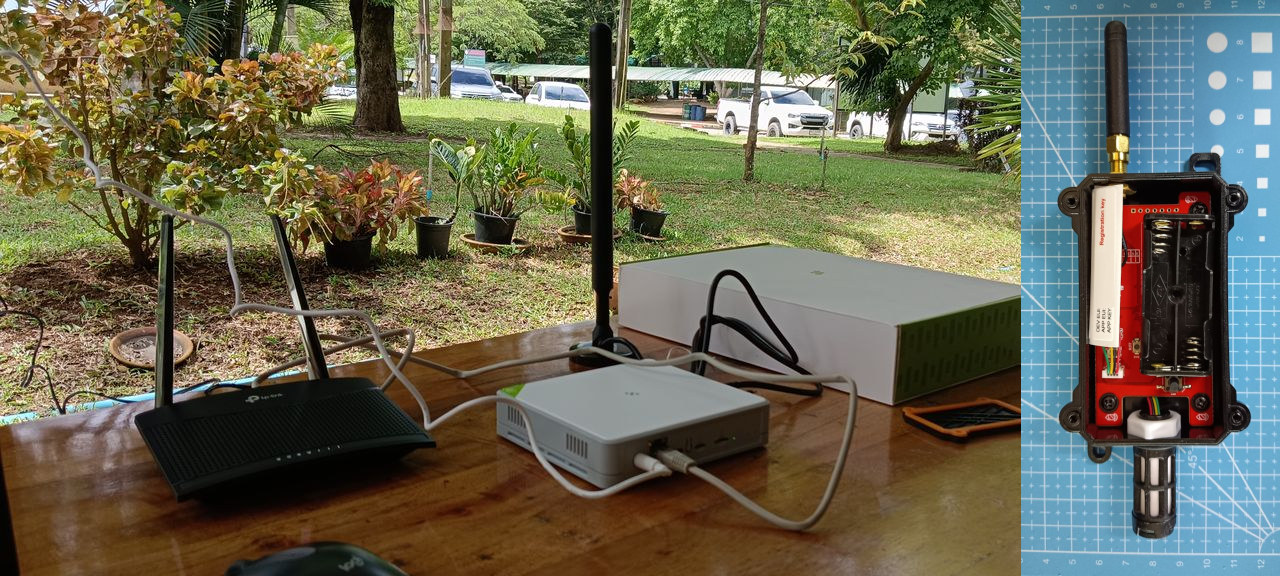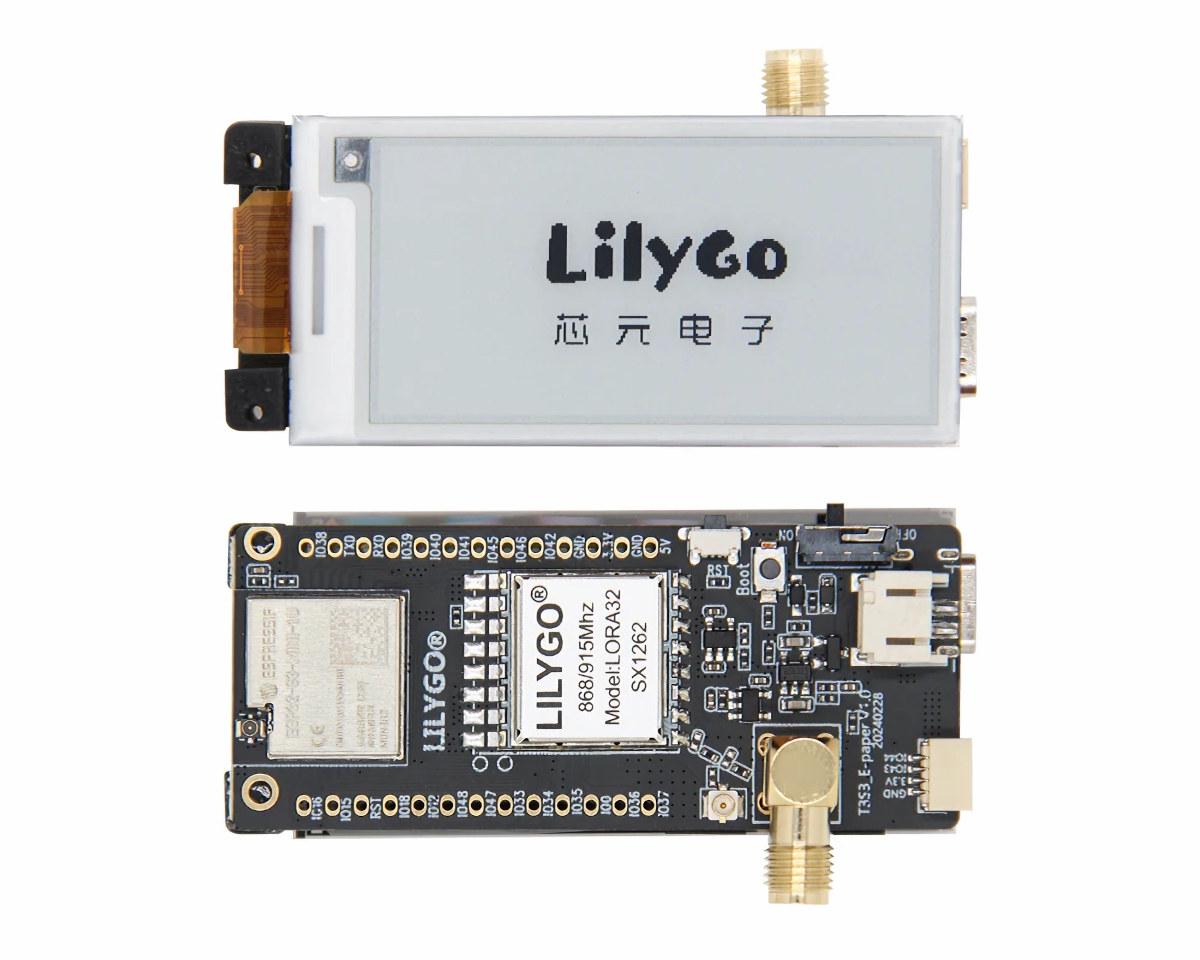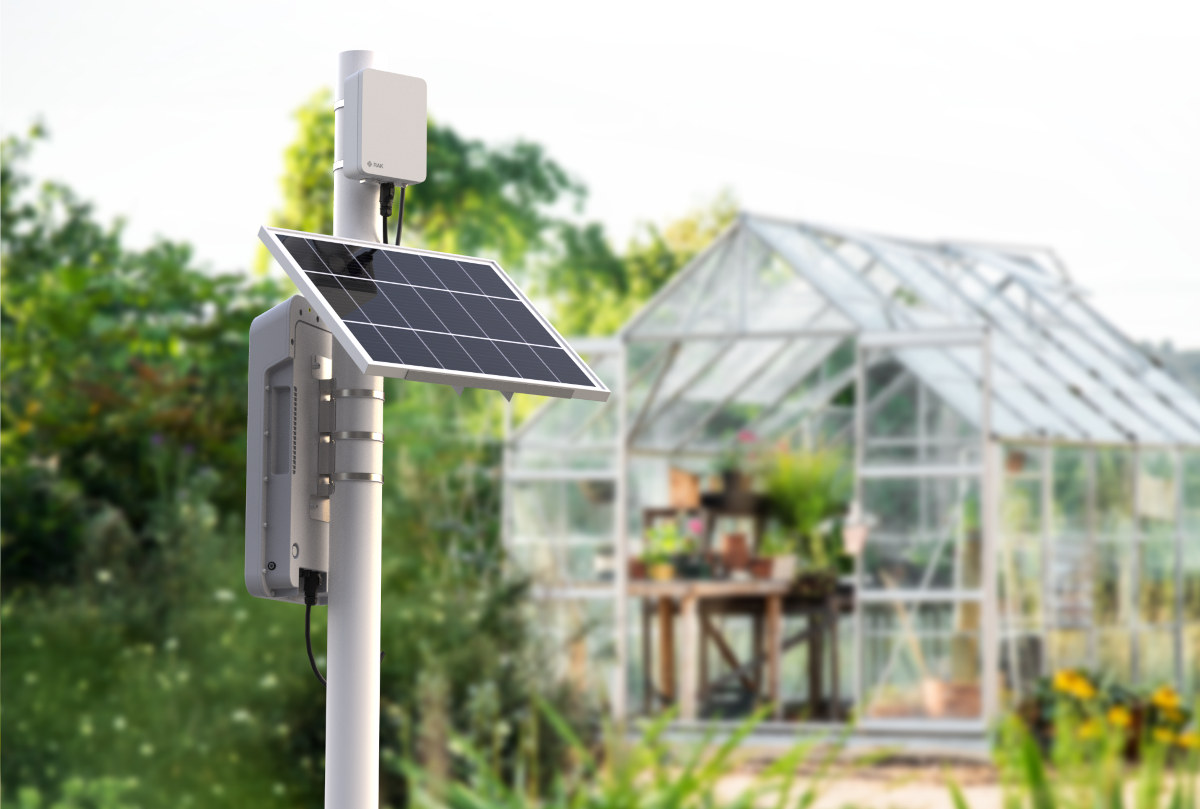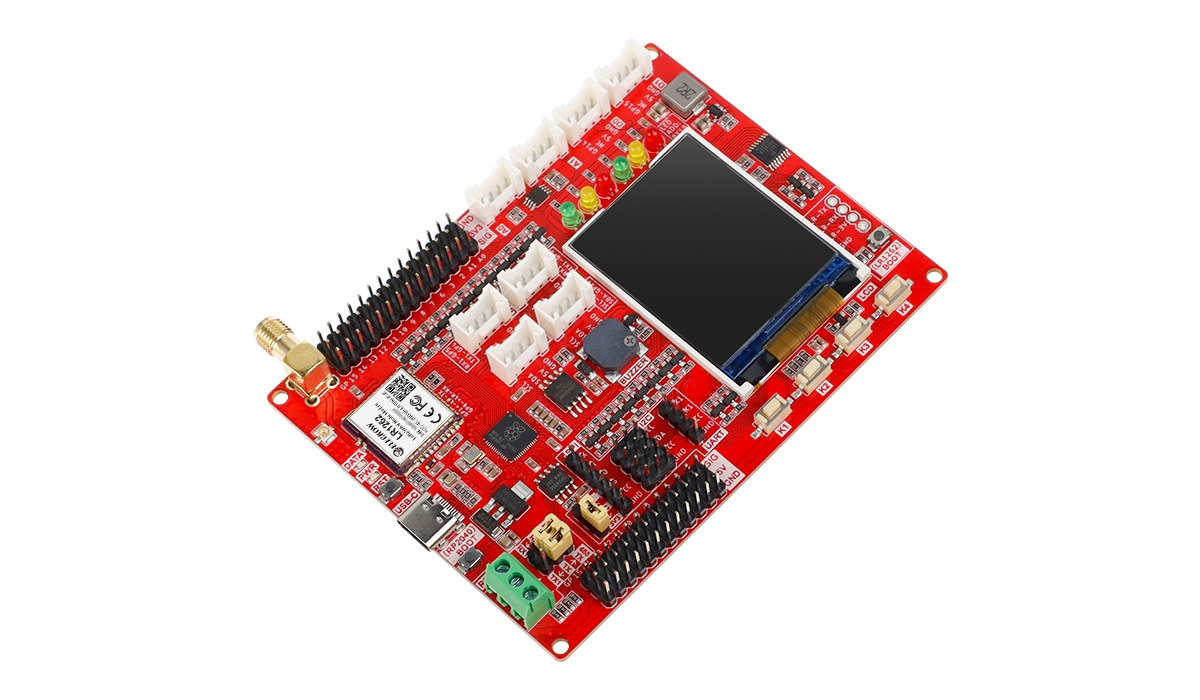The Makerfabs SenseLora 4G Gateway is a device that collects data from LoRa sensors (like temperature and humidity sensors) and sends that data over a 4G network to a cloud service or directly to your phone via SMS, this is ideal for applications where installing a LoRaWAN device is unnecessary or expensive. The application for this gateway includes monitoring soil humidity in your backyard or greenhouse conditions on your farm. Previously we have written about similar smart agriculture sensors including AgroSense LoRaWAN sensors and WisGate Soho Pro RAK7267 LoRaWAN gateway feel free to check those out if you are looking for LoRa-based agricultural products. Makerfabs SenseLora 4G gateway specifications SoC – Espressif ESP32-S3R8 CPU – Dual-core Tensilica LX7 microcontroller up to 240 MHz with vector instructions for AI acceleration Memory – 8MB PSRAM Wireless – WiFi 4 and Bluetooth 5.0 LE + Mesh connectivity LPWAN connectivity LoRaWAN SX1276 LoRa module Frequencies 868 […]
Dusun DSOM-042R is a Rockchip RK3588M system-on-module for “automotive AIoT” applications
Dusun DSOM-042R is a system-on-module based on Rockchip RK3588M automotive-grade AI SoC with 8GB RAM and 128GB eMMC flash, capable of operating in the -40°C to 85°C temperature range, and fitted with four high-density connected exposes the many interfaces from the octa-core Cortex-A76/A55 processor. We first found out about the RK3588M SoC last year with the Firefly AIO-3588MQ board also comprised of a system-on-module and carrier board with support for up to sixteen cameras and up to six Full HD displays to drive the car dashboard, in-vehicle infotainment, a digital rearview mirror, headrest monitors, ADAS system, and more. We hadn’t noticed other manufacturers launch a product with the automotive-grade RK3588M, and the DusunIoT DSOM-042R offers another option. Dusun RK3588M SoM specifications: SoC – Rockchip RK3588M octa-core processor with CPU – 4x Cortex-A76 cores @ up to 2.1 GHz, 4x Cortex-A55 cores @ up to 1.7 GHz (frequencies TBC) GPU – […]
LILYGO T-ETH-ELite ESP32-S3 Ethernet PoE board supports stackable LoRaWAN and Cellular expansion modules
LILYGO T-ETH-Elite is an ESP32-S3-powered IoT board with an Ethernet RJ45 port supporting PoE and a 40-pin GPIO header for stackable shields that offer support for LoRaWAN, 2G, NB-IoT, or/and 4G LTE cellular connectivity. The ESP32-S3 board allows users to build gateways with Ethernet, WiFi, Bluetooth, GNSS, LoRaWAN, and Cellular (2G, NB-IoT, 4G LTE) connectivity, and they can easily switch cellular modules to match specific requirements. LILYGO T-ETH-Elite specifications: Wireless module – Espressif ESP32-S3-WROOM-1 MCU – ESP32-S3R8 dual-core Tensilica LX7 up to 240 MHz with 512KB SRAM, up to 8MB PSRAM Storage – 16MB flash Connectivity – WiFi 4 and Bluetooth LE 5 PCB antenna Storage – MicroSD card slot Networking – 10/100Mbps Ethernet RJ45 port via W5500 SPI to Ethernet chip USB – USB Type-C port for power and programming Expansion – 40-pin (mostly) Raspberry Pi-compatible GPIO header for shields (up to 23x GPIO, USB 2.0, UART, 5V, 3.3V, […]
Seeed Studio Wio Tracker 1110 Dev Kit supports Meshtastic for off-grid communication
The Seeed Studio Wio Tracker 1110 is a dev kit designed to work with the Meshtastic network. The board is built around a Nordic nRF52840 multiprotocol Bluetooth 5.4 SoC and uses the Semtech LR1110 LoRa transceiver for communication. Seeed Studio is selling the Wio Tracker 1110 development board in a bundle with an OLED display and a GNSS receiver, providing everything needed to start experimentation for peer-to-peer LoRa mesh networking. Meshtastic is a free, open-source, decentralized mesh network that uses LoRa radios to establish a low-power, long-range, off-grid communication system in areas without reliable infrastructure. Driven entirely by the community, Meshtastic enables decentralized, encrypted communication without the need for a dedicated router or phone. Previously we have written various versions of the Wio Tracker including the Wio GPS and Wio LTE GPS Tracker. Since Meshtastic projects are becoming popular among developers and enthusiasts, we will likely see many more dev […]
Review of AgroSense LoRaWAN Smart Agriculture sensors with the SenseCAP M2 LoRaWAN gateway
Today, I will be reviewing the AgroSense LoRaWAN sensors from Makerfabs designed for high-precision agriculture. This time, I received four sets of sensors designed for measuring environmental data and a Seeed Studio SenseCAP M2 LoRaWAN gateway. Below is the list of items I received. AgroSense LoRaWAN Barometric Pressure Sensor – Measures the barometric pressure in a 300 to 1100 hPa range with ±0.12 hPa accuracy and 0.01 hPa resolution. AgroSense LoRaWAN Light Intensity Sensor – Measures the light intensity in a 1 to 65535 lx range with ±1 lx accuracy and ±20% resolution. AgroSense LoRaWAN Temperature & Humidity Sensor – Measures temperature and humidity in the atmosphere in the ranges of -40°C to 85°C and 0 to 100 %RH with accuracy of ±0.2°C and ±0.2% RH respectively. AgroSense LoRaWAN Industrial Temperature Sensor – Measures temperature in the industrial high-temperature environments in the -60°C to 200°C range with ±0.1°C accuracy and […]
LILYGO T3S3 E-Paper combines ESP32-S3 WiFi & BLE SoC with LoRa module, 2.13-inch e-Paper display
LILYGO T3S3 E-Paper is an ESP32-S3 WiFi and Bluetooth LE development board with a 2.13-inch e-Paper display and an SX1262 LoRa module that should make it suitable for off-grid messsaging even under sunlight. LILYGO has made some ESP32-S3 boards with an e-Paper display and some ESP32-S3 boards with a LoRa module, but unless I’m mistaken, the T3S3 E-Paper is the first board from LILYGO that combines ESP32-S3 SoC with e-Paper display and a LoRa module. It builds upon the earlier LILYGO T3S3 board with a 0.96-inch OLED. LILYGO T3S3 E-Paper specifications: ESP32-S3-WROOM-1U wireless module SoC – ESP32-S3FH4R2 dual-core Tensilica LX7 microcontroller @ up to 240 MHz with 2.4 GHz 802.11n WiFi 4 and Bluetooth 5.0 LE connectivity Memory – 2MB PSRAM Storage – 4MB SPI flash IPEX antenna connector Storage – MicroSD card slot Display – 2.13-inch e-Paper display (DEPG0213BN) with 250×122 resolution; size: 48.55 x 23.70mm Wireless 2.4 GHz […]
WisGate Soho Pro RAK7267 LoRaWAN gateway supports LTE Cat 1 and WiFi 4 connectivity, solar battery kits
Designed for both indoor and outdoor deployments, RAKwireless’ WisGate Soho Pro RAK7267 is an 8-channel LoRaWAN gateway with LTE Cat 1 and WiFi 4 connectivity and support for 9V-36V DC input compatible with the company for solar battery kits. The LoRaWAN gateway is based on the MediaTek MT7628 MIPS processor with 256MB RAM and 32MB flash, runs a fork of OpenWrt with a dashboard for configuration, and integrates with WisDM cloud-based IoT management platform. WisGate Soho Pro RAK7267 specifications: SoC – MediaTek MT7628 MIPS processor at 580MHz System Memory – 256MB RAM Storage – 32MB NOR flash, microSD card socket LoRaWAN connectivity to sensors Semtech SX1303 LoRa Concentrator for up to 8 channels Frequencies 868 MHz – EU868/ IN865/ RU864 9150 MHz – US915/ AU915/ KR920/ AS923 Rx Sensitivity – At least -139 dBm Tx Power – Up to 27 dBm LoRaWAN v1.0.3 LoRa Frame filtering (node whitelisting) Buffering of […]
Elecrow LR1262 development board combines Raspberry Pi RP2040, SX1262 LoRaWAN module, and 1.8-inch LCD
Elecrow LR1262 development board combines a Raspberry Pi RP2040 microcontroller with the company’s LR1262 LoRaWAN module based on STM32WL LoRa SoC with support for 868 and 915 MHz frequency bands, and a 1.8-inch LCD. The board also offers an RS485 terminal block to connect sensors and actuators, plenty of connectors and headers for further expansion, several buttons for user control, and LEDs for debugging/monitoring. Elecrow LR1262 development board specifications: MCU – Raspberry Pi RP2040 dual-core Arm Cortex-M0+ @ 133MHz built-in 264KB SRAM Storage – 4MB flash Display – 1.8-inch 128×160 TFT LCD using ST7735S 4-wire SPI driver Wireless – Elecrow LR1262 LoRaWAN module MCU – STMicro STM32WLE5CCU6 Arm Cortex-M4 32-bit, 256 KB Flash, 64KB RAM RF transceiver – Semtech LX1262 Frequency band – 150 MHz to 930 MHz (Note: the board itself is advertised as supporting 803MHz to 930MHz: IN865, EU868, AU915, US915, KR920, RU864, and AS923) LoRaWAN protocol – […]


